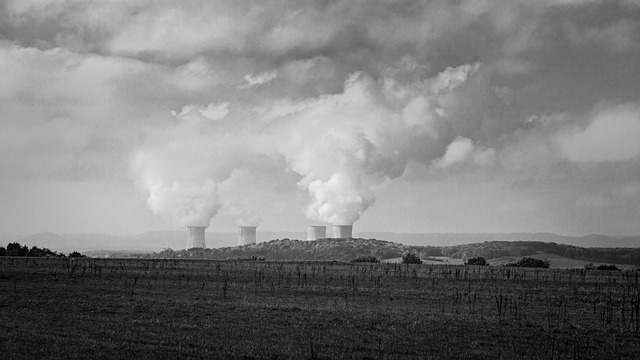Radioactive contrast agents in nuclear medicine enhance imaging for accurate diagnoses but carry risks. These include immediate and long-term health issues linked to radiation exposure. Regulatory bodies globally set strict guidelines for safe use, including rigorous testing, dosimetry protocols, and patient monitoring. Healthcare providers must follow best practices for preparation, handling, dosage, and post-procedure care to minimize these risks.
In today’s medical landscape, radioactive contrast agents (RCAs) play a pivotal role in nuclear medicine procedures. While these agents enhance imaging accuracy, safety and radiation concerns remain paramount. This article delves into understanding RCAs, exploring potential risks associated with radiation exposure, and highlighting regulatory guidelines designed to safeguard patients. We also examine best practices for safe administration, providing insights into minimizing risks in the use of radioactive contrast for nuclear medicine.
Understanding Radioactive Contrast Agents in Nuclear Medicine
Nuclear medicine is a specialized field of healthcare that utilizes radioactive substances, or radioisotopes, to diagnose and treat various medical conditions. Radioactive contrast agents play a crucial role in this process by allowing for detailed imaging and accurate diagnosis. These agents are designed to accumulate in specific areas of the body, such as tumors or organs, where they emit radiation that can be detected by specialized cameras. This technology provides doctors with valuable insights into a patient’s internal anatomy, aiding in the early detection and assessment of diseases like cancer.
Understanding how these radioactive contrast agents work is essential for ensuring patient safety. Unlike traditional contrast dyes used in X-rays or MRI scans, which are quickly excreted from the body, radioisotopes have varying half-lives and need to be carefully managed. Medical professionals must consider factors such as the type of radioisotope, its activity, and the time elapsed after administration to ensure minimal radiation exposure for both patients and medical staff. Proper handling, including shielding and waste management, is vital to mitigate potential risks associated with these powerful diagnostic tools in nuclear medicine.
Potential Risks and Side Effects of Radiation Exposure
The use of radioactive contrast agents in nuclear medicine, while highly effective for diagnostic imaging, carries inherent risks and potential side effects stemming from radiation exposure. These risks vary depending on the type of radioisotope used, the duration of exposure, and individual factors like age and overall health. Short-term effects may include skin irritation or burns, nausea, fatigue, and hair loss, particularly in areas that were directly exposed to the radiation source.
Longer-term consequences can be more severe, encompassing an increased risk of cancer, particularly in organs with higher radiation absorption rates such as the thyroid and breasts. Genetic mutations may also occur, potentially leading to hereditary health issues. It’s crucial for patients to weigh these risks against the diagnostic benefits, especially when considering repeated exposure for follow-up scans or other medical procedures that involve radioactive contrast agents.
Regulatory Guidelines and Safety Measures for Use
Regulatory bodies worldwide have established stringent guidelines and safety measures to oversee the use of radioactive contrast agents in nuclear medicine procedures. These regulations are designed to ensure patient safety, minimize risks, and optimize the benefits of nuclear imaging techniques. Before a radioactive contrast material is approved for clinical use, it must undergo rigorous testing and evaluation to prove its efficacy and safety profile.
The guidelines encompass various aspects, including dosimetry protocols, radiation protection standards, and quality assurance procedures. Medical professionals are mandated to follow these protocols rigorously to maintain the highest levels of safety during procedures involving radioactive contrast for nuclear medicine. This includes appropriate training, proper handling and storage of radiopharmaceuticals, and meticulous patient monitoring to detect any potential adverse effects early on.
Minimizing Risk: Best Practices for Safe Administration
Minimizing risk is paramount when utilizing radioactive contrast agents in nuclear medicine procedures. To ensure safety, healthcare providers must adhere to stringent best practices throughout the administration process. This includes meticulous preparation and handling of the radioactive substance, strict adherence to dosage guidelines, and monitoring patients for any adverse reactions or unusual symptoms post-procedure.
Implementing robust safety protocols involves utilizing specialized equipment designed for safe interaction with radioactivity, wearing appropriate personal protective equipment (PPE), and maintaining a controlled, sterile environment. Additionally, proper training and ongoing education for medical staff are essential to stay updated on the latest safety measures and guidelines specific to different radioactive contrast agents used in nuclear medicine.
Nuclear medicine utilizes radioactive contrast agents to enhance imaging accuracy, but it’s crucial to balance this benefit against potential risks. By understanding the nature of these agents and adhering to strict regulatory guidelines, healthcare professionals can ensure safe administration. Implementing best practices, such as proper dosimetry, patient selection, and monitoring, minimizes the exposure to radiation, making nuclear medicine a safer option for diagnostic procedures. These measures are essential in maximizing the benefits of radioactive contrast for nuclear medicine while safeguarding patients’ well-being.
